Written by: UkuriaOC, CryptoVizArt, Glassnode
Compiled by: AididiaoJP, Foresight News
Ethereum's price continues to strengthen, moving towards historical highs, while Bitcoin is consolidating below its peak. However, the surge in open contracts for major altcoins, combined with Bitcoin's unusually low volatility expectations, lays the groundwork for increased volatility in the digital asset market.
Abstract
Ethereum's rally continues to accelerate, with its price reaching $4,600, the highest level since December 2021, only about 5% lower than the previous all-time high. However, speculation around this leading altcoin is increasing, pushing the total open contracts of major altcoins to a record $47 billion. This accumulation of leverage creates a more volatile backdrop for the market, with price shocks increasingly having a reflexive impact.
Key on-chain indicators for Bitcoin show its momentum remains strong. Short-term holders experienced significantly lower actual losses during the recent pullback to $112,000, while the vast majority of investors remain in profit.
Options traders continue to bet on a low volatility mechanism, with at-the-money implied volatility (IV) across all maturities being at multi-year lows. Historically, periods of abnormally low implied volatility often foreshadow sharp expansions in actual volatility, which can be viewed as a contrarian signal.
Ethereum is approaching its +1σ active realized price level of $4,700, a region that has historically triggered strong selling pressure. Meanwhile, Bitcoin is nearing its +1σ (one standard deviation, meaning larger σ indicates greater price volatility) short-term holders' cost basis of $127,000, which has consistently been a periodic resistance level. If Bitcoin can decisively break through this level, it may open the pathway for further price increases to the +2σ level of $144,000.
Note: The σ levels help traders identify historic price boundaries; +1σ is a key short-term resistance level, and if breached, may challenge higher standard deviation levels (e.g., +2σ). Prices reaching +2σ typically mean the market is overheating (e.g., investors are over-leveraged), and caution regarding pullback risks is warranted. The same applies below.
Altcoin Rally
The digital asset market's upward momentum continues to accelerate, with Ethereum leading the charge. Its price has climbed from $1,500 in April to $4,300, the highest level since December 2021, only 5% below its all-time high of $4,800. Historically, Ethereum has been a bellwether for the broader altcoin performance, and its recent strong performance is driving investors to speculate further along the risk curve.
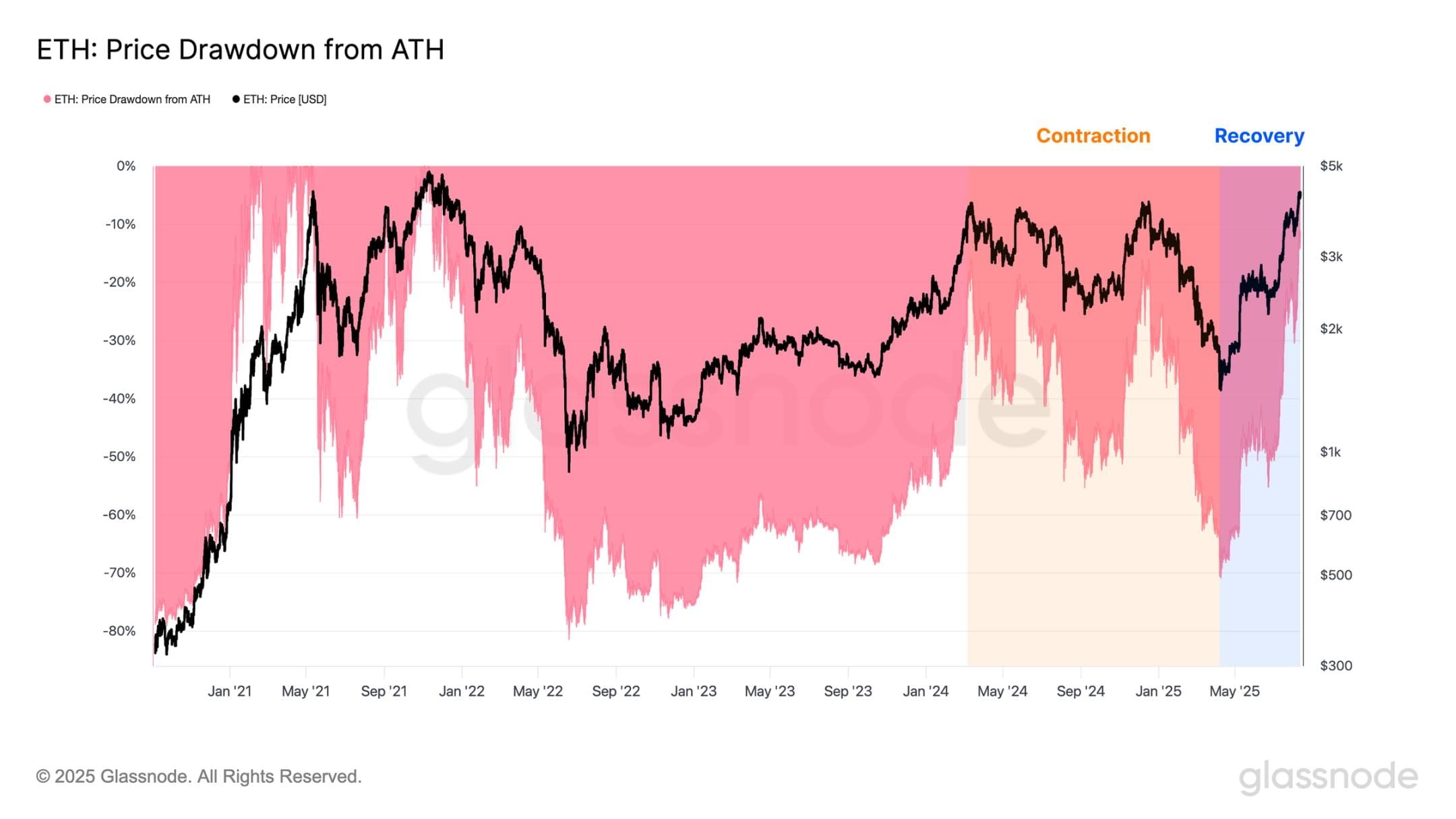
This rotation of funds is also reflected in the Bitcoin dominance metric, which measures Bitcoin's share of the total market capitalization of digital assets. Over the past two months, Bitcoin's dominance has fallen from 65% to 59%, highlighting that funds are flowing further into higher-risk assets.
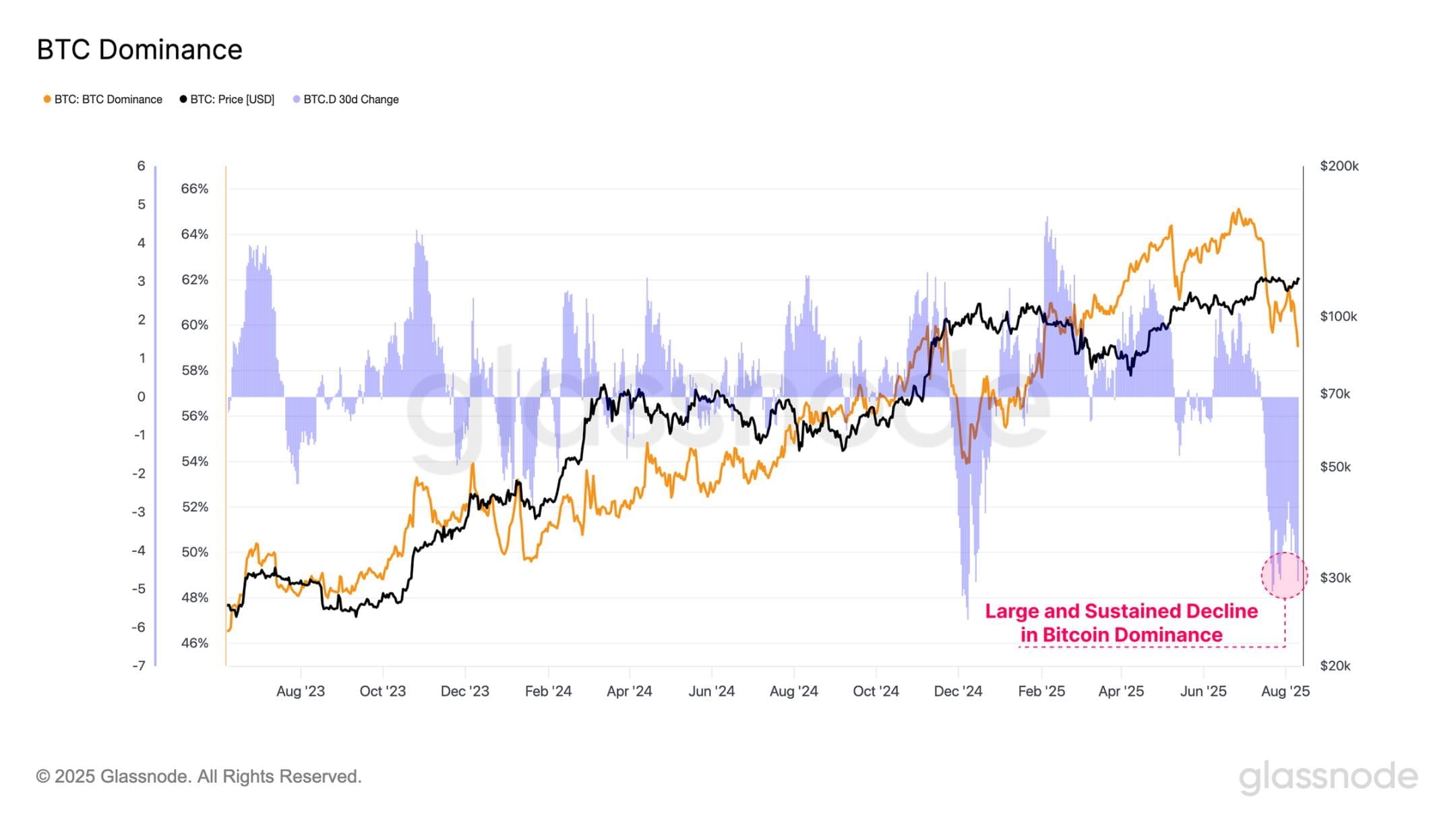
By observing the 7-day percentage changes of major altcoins (Ethereum, XRP, Solana, and Dogecoin), we can see that during July and August, these assets repeatedly exhibited strong gains:
Ethereum 7-day Gain: +25.5%
XRP 7-day Gain: +16.2%
Solana 7-day Gain: +13.6%
Dogecoin 7-day Gain: +25.5%
These gains indicate that as investor speculation activity increases, altcoins are entering a broad uptrend.
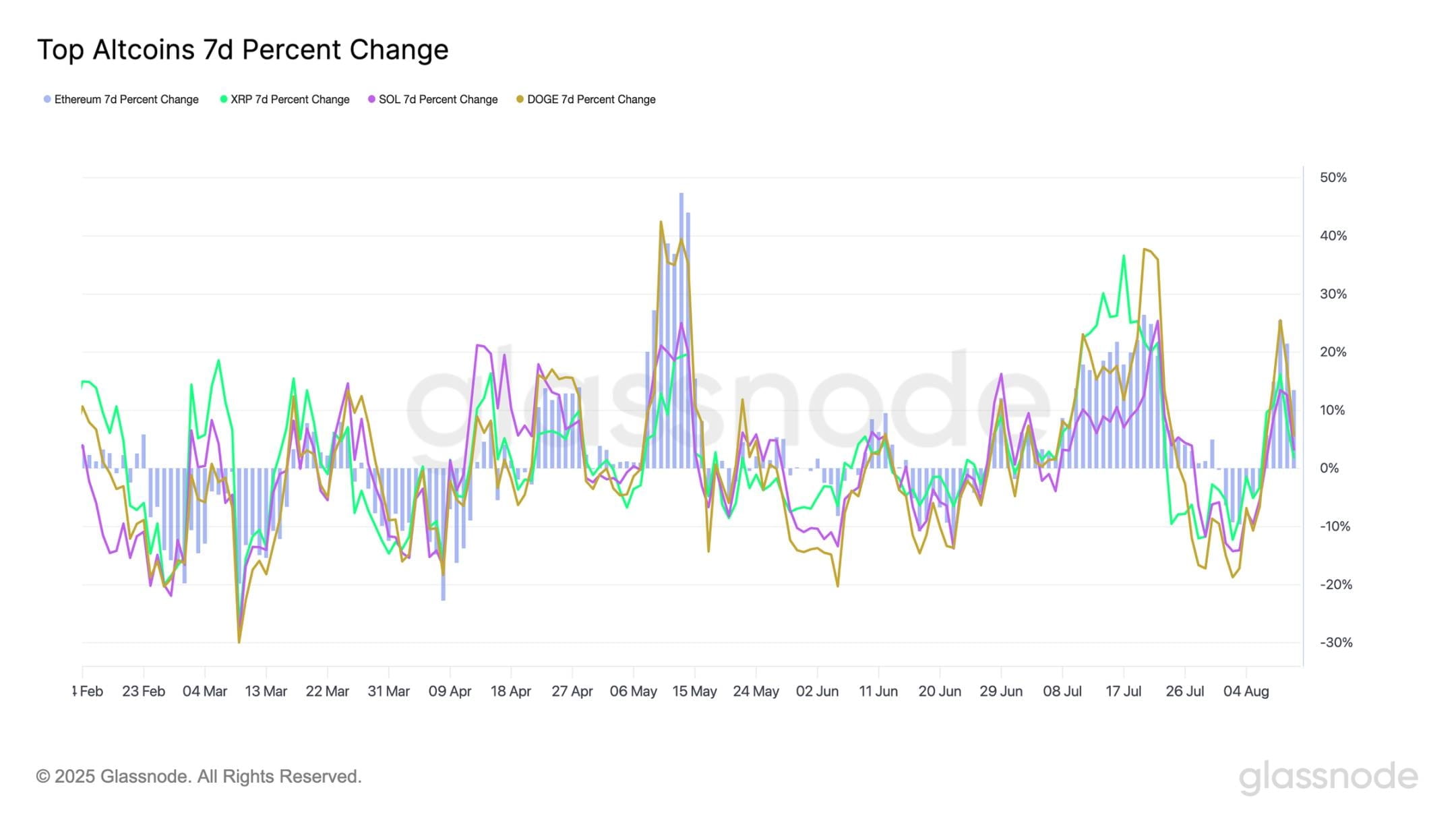
Another way to measure the performance of major altcoins is to construct a market capitalization-weighted basket of altcoins and assess its 7-day logarithmic return, a method that naturally eliminates the impact of differences in asset sizes. By applying the ±1σ range, we can identify statistically significant periods of outperformance or underperformance. Over the past four months, this method has revealed three sustained periods of outperformance, highlighting the excess returns in the altcoin space.
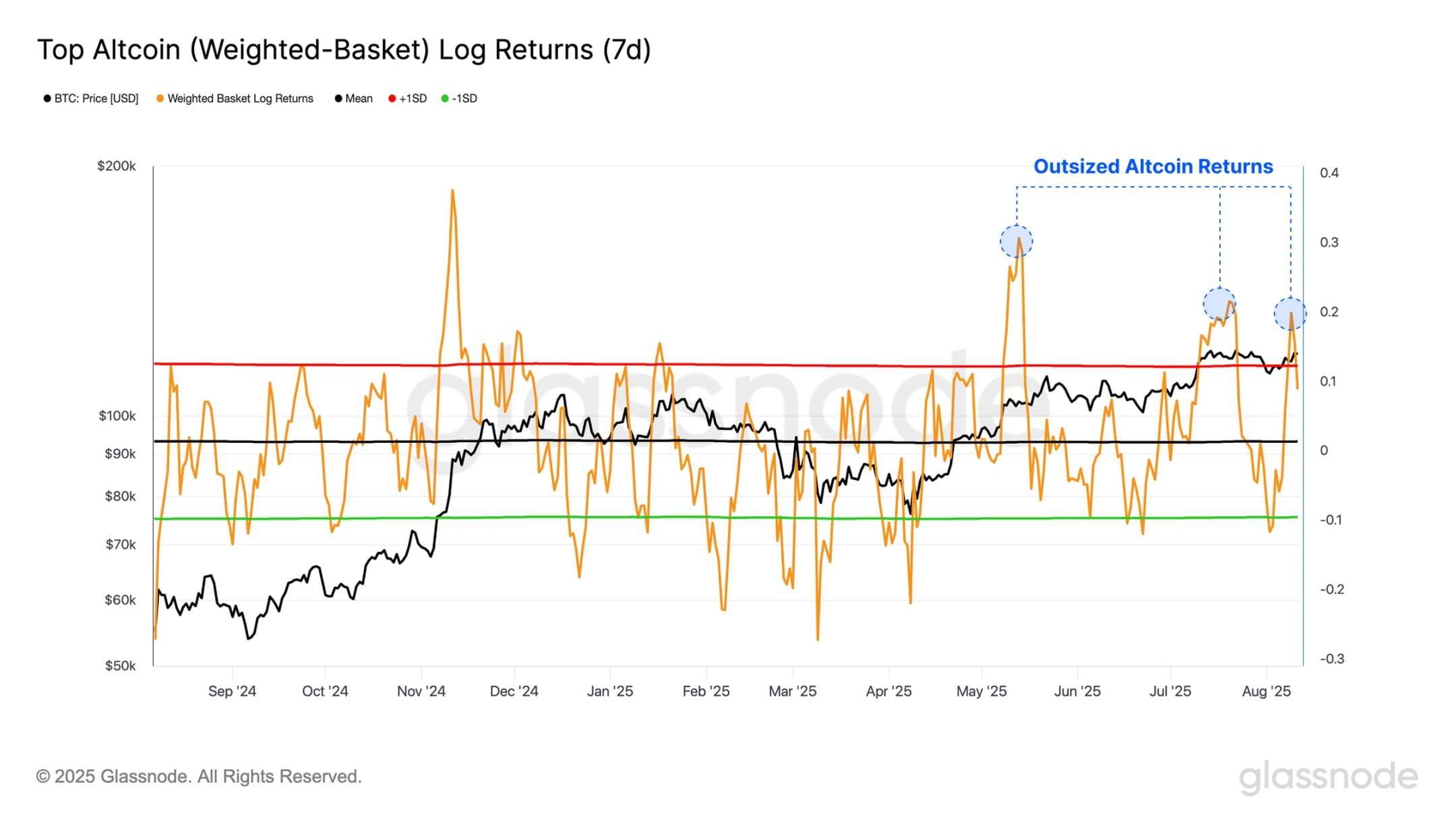
Significant price volatility in major altcoins has driven the total open contracts to a new high of $47 billion. These conditions indicate that leverage is accumulating in the market, making it more susceptible to severe price fluctuations. High leverage can amplify upward movements but can also exacerbate downward trends, creating a more reflexive and fragile market environment.
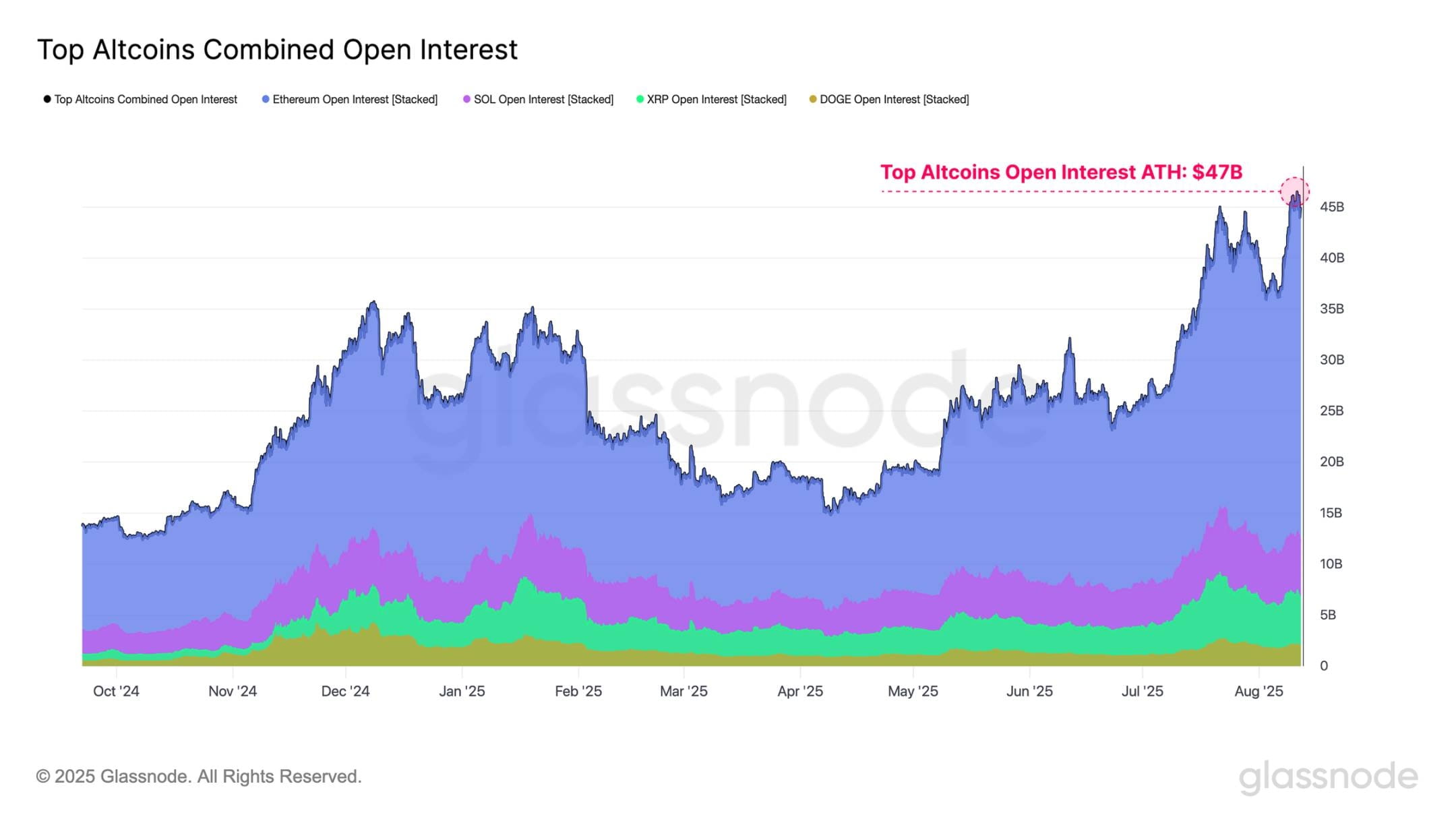
Turning Point
In contrast, Bitcoin has consistently outperformed most altcoins throughout the cycle, but faced challenges in the second half of July when its price dropped to $112,000, down 9%, entering a low liquidity gap area. Since then, Bitcoin has rebounded strongly and is currently only 1% below its historical high, indicating that the market is trying to enter a new phase of price discovery.
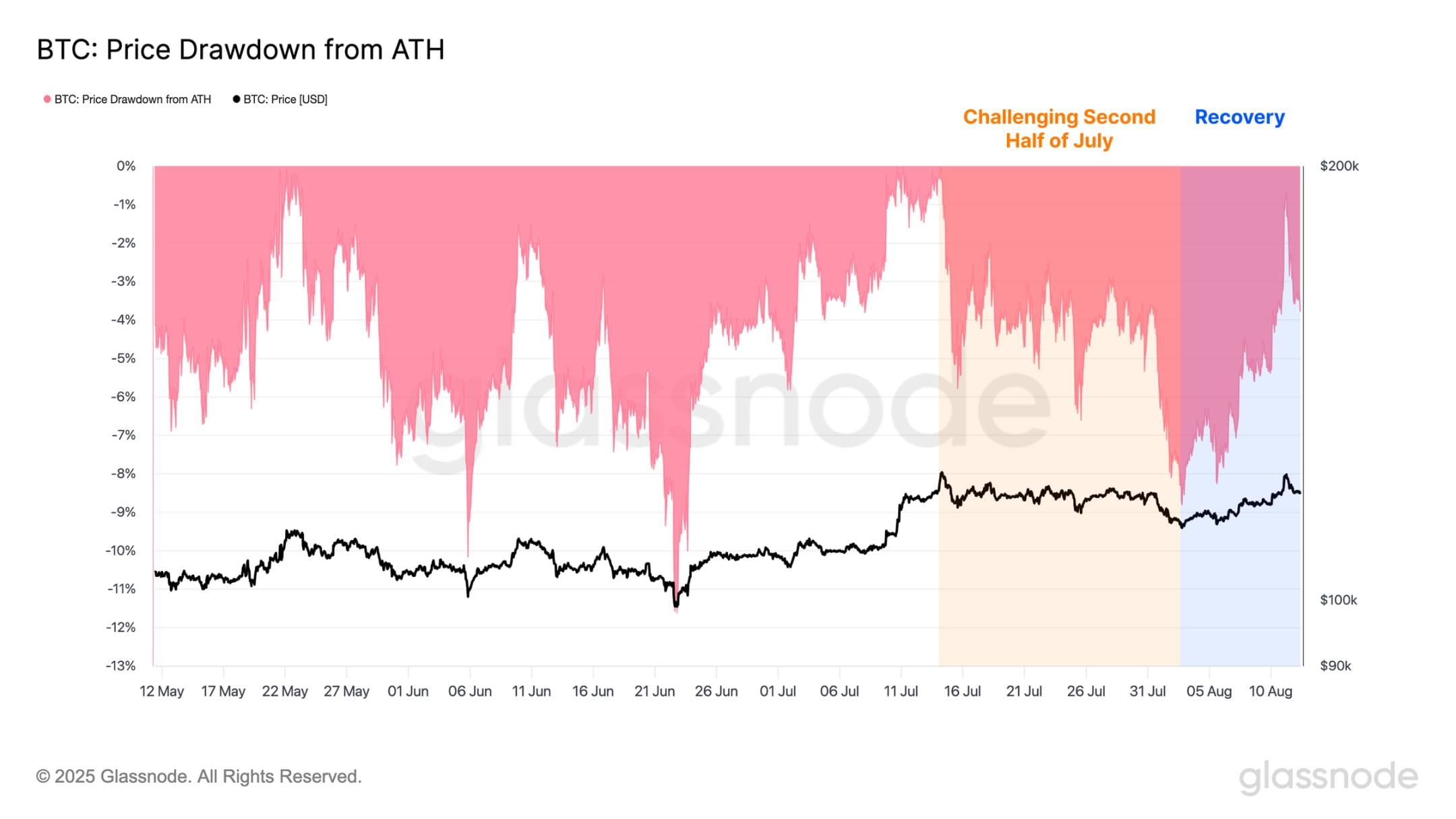
The recent upward momentum is strongly supported by fundamental on-chain data. During the pullback, the proportion of circulating supply in profit has remained resilient, finding support at its +1σ level. This indicates that the vast majority of investors (95%) still hold unrealized profits.
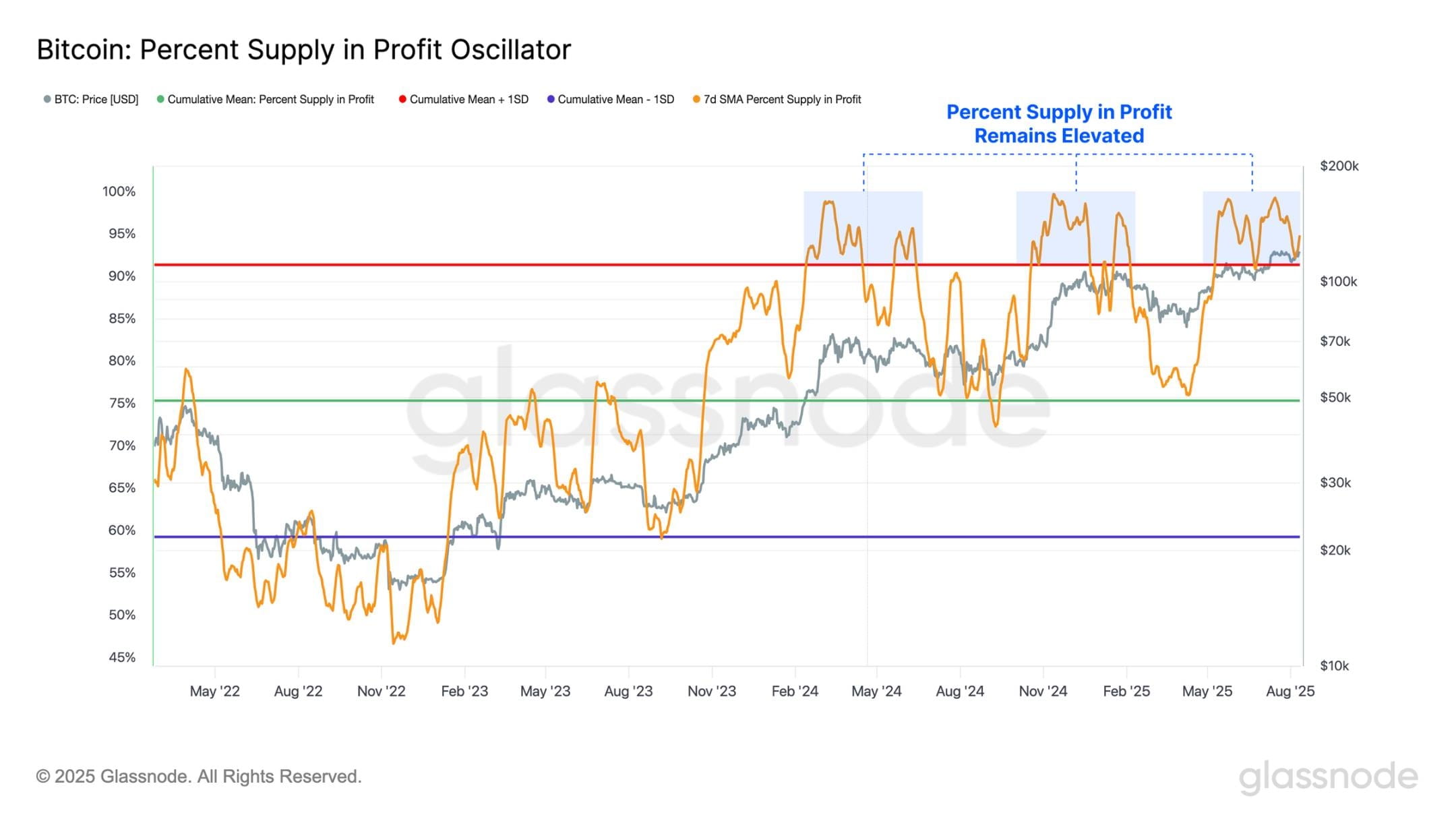
In the recent market downturn, the spending profit ratio (SOPR) for short-term holders has returned to equilibrium at 1.0, only briefly and slightly dipping below this level. This pattern indicates that new investors have been actively defending their cost basis, and despite the sharp deterioration of market structure, actual losses have been relatively limited.
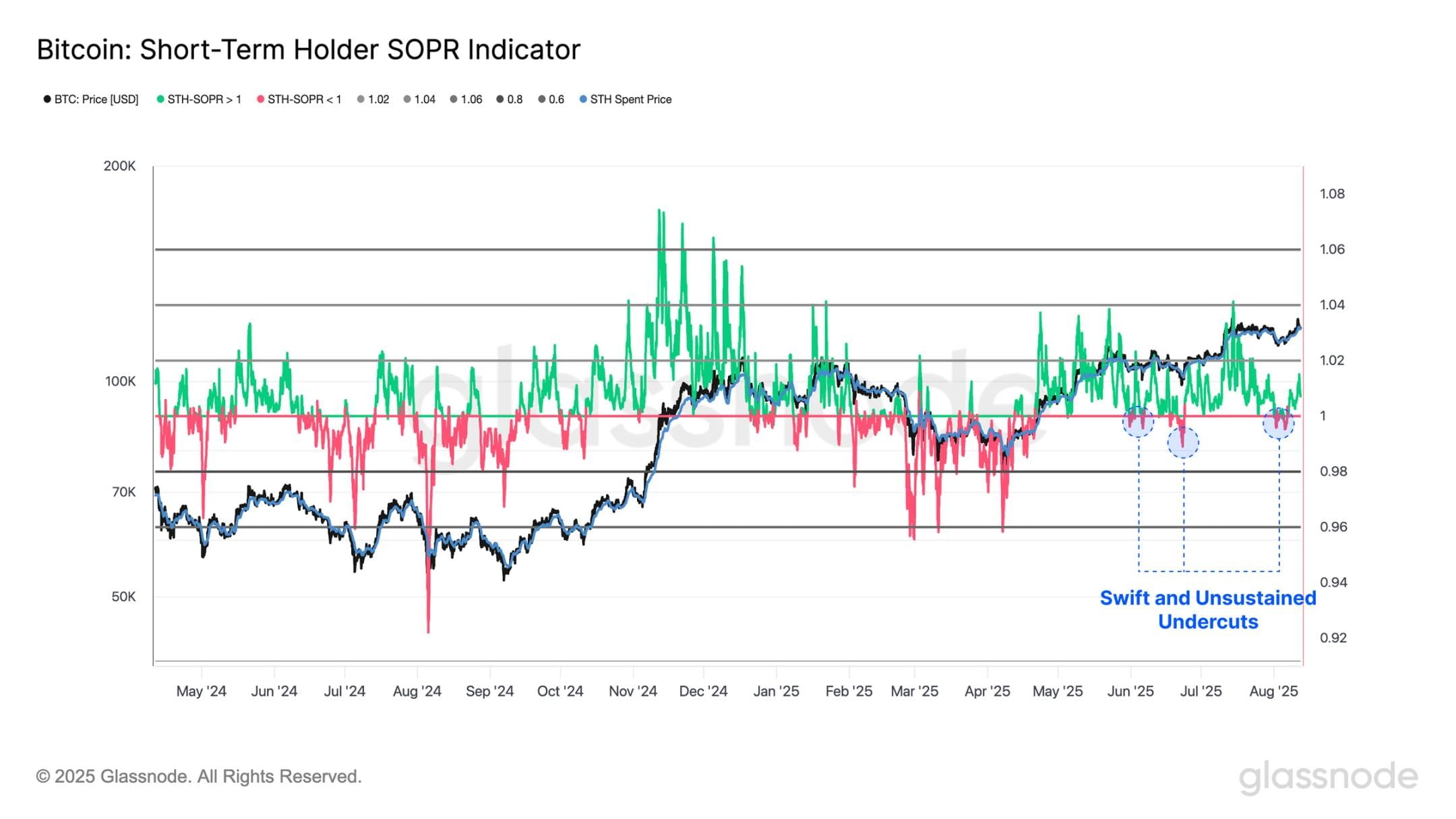
Additionally, we can use an equally weighted portfolio to measure the average profit ratio of tokens held by different age groups of investors. This provides an intuitive market momentum indicator by tracking when an increasing number of investors switch from unrealized profits to unrealized losses.
In the recent adjustment, the oscillator has remained above the mean and found strong support at that level, indicating that most investors remained profitable during the downturn. Combined with the marginal losses reflected by the SOPR metric for short-term holders, this suggests very little selling pressure from market participants. Maintaining this threshold marks an improvement in market conditions and provides a constructive backdrop for ongoing upward momentum.
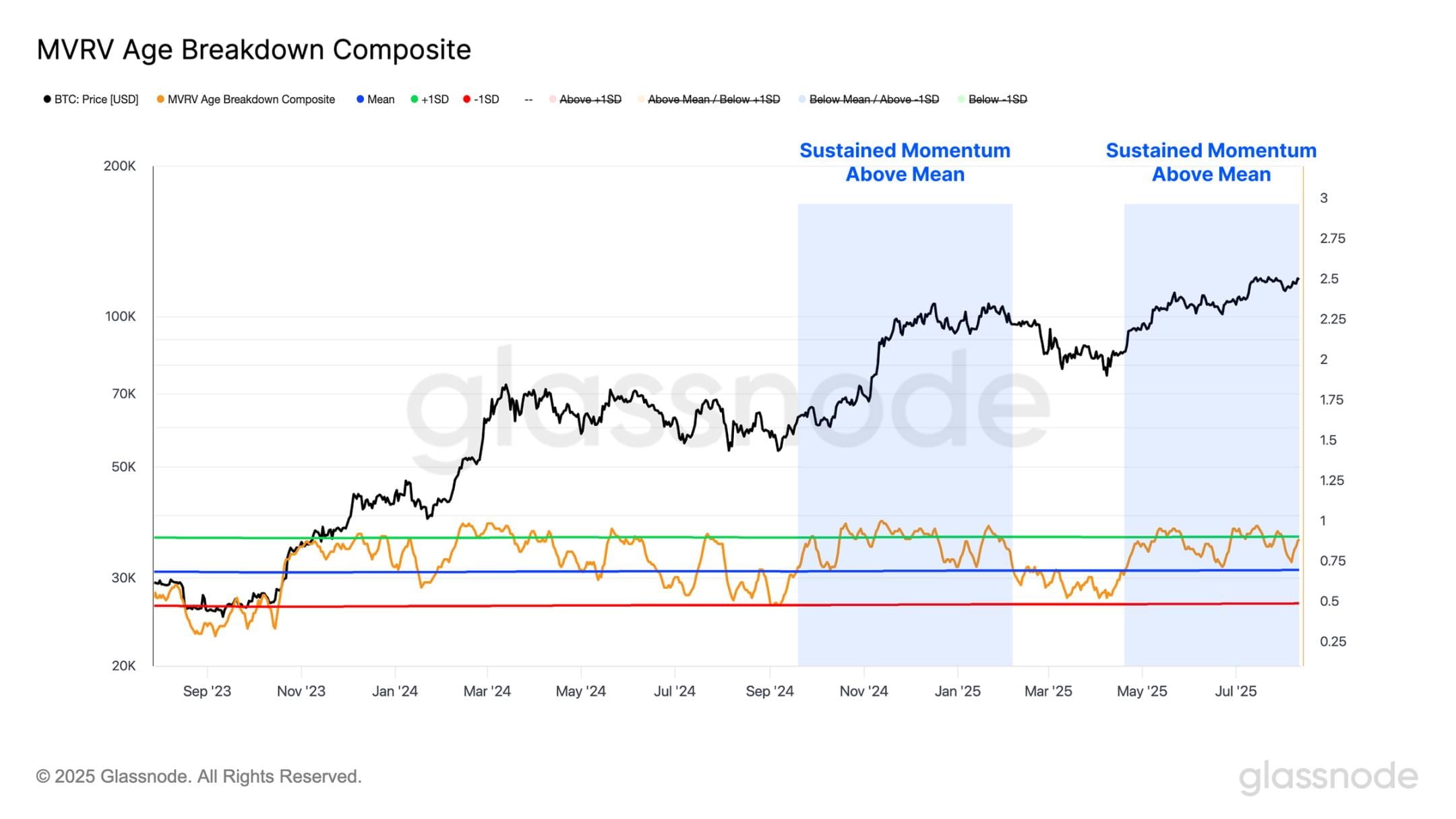
Implied Volatility Continues to Contract
Turning to the options market, the at-the-money implied volatility (ATM IV) remains in a sustained downtrend, indicating that traders do not yet expect the market to shift to a high volatility mechanism. Historically, this low volatility expectation often foreshadows significant volatility in the market, making it a potential contrarian indicator.
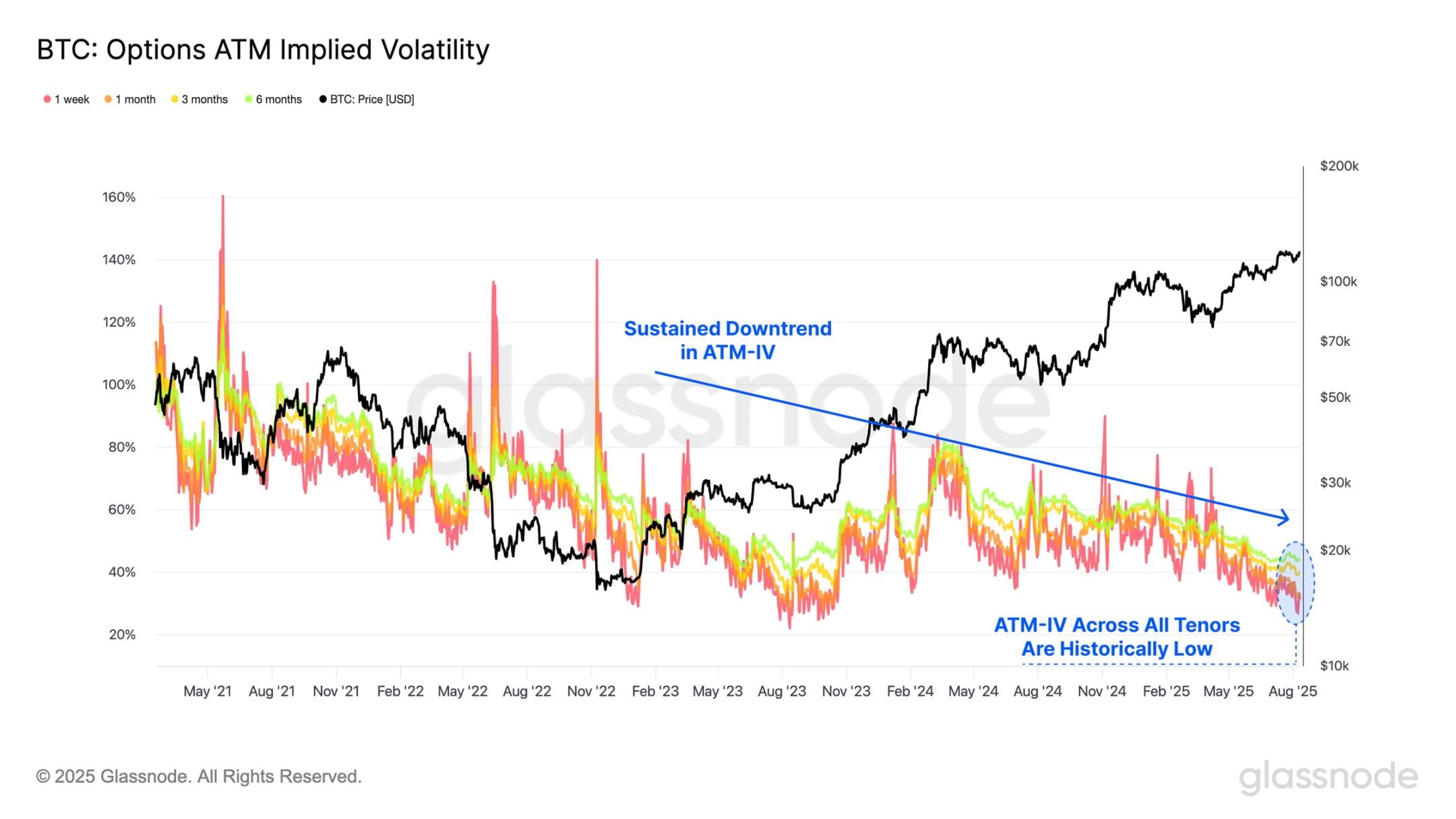
Additionally, we can further validate the above observations through Deribit's DVOL index. This index is a 30-day implied volatility metric based on options data for all strike prices, not just at-the-money options. Similar to the VIX index in the stock market, it provides a broad view of market sentiment and expected price volatility, helping traders assess risk and identify periods of intensified speculation or uncertainty.
The current DVOL reading is at a historical low, with only 2.6% of trading days having values below the current level. This level typically reflects complacency in the market and a lack of demand for hedging against significant volatility. While this situation may persist, the market will be susceptible to sudden fluctuations if a catalyst occurs, as evidenced by the violent and disorderly price swings seen during rapid risk repricing in past cycles.
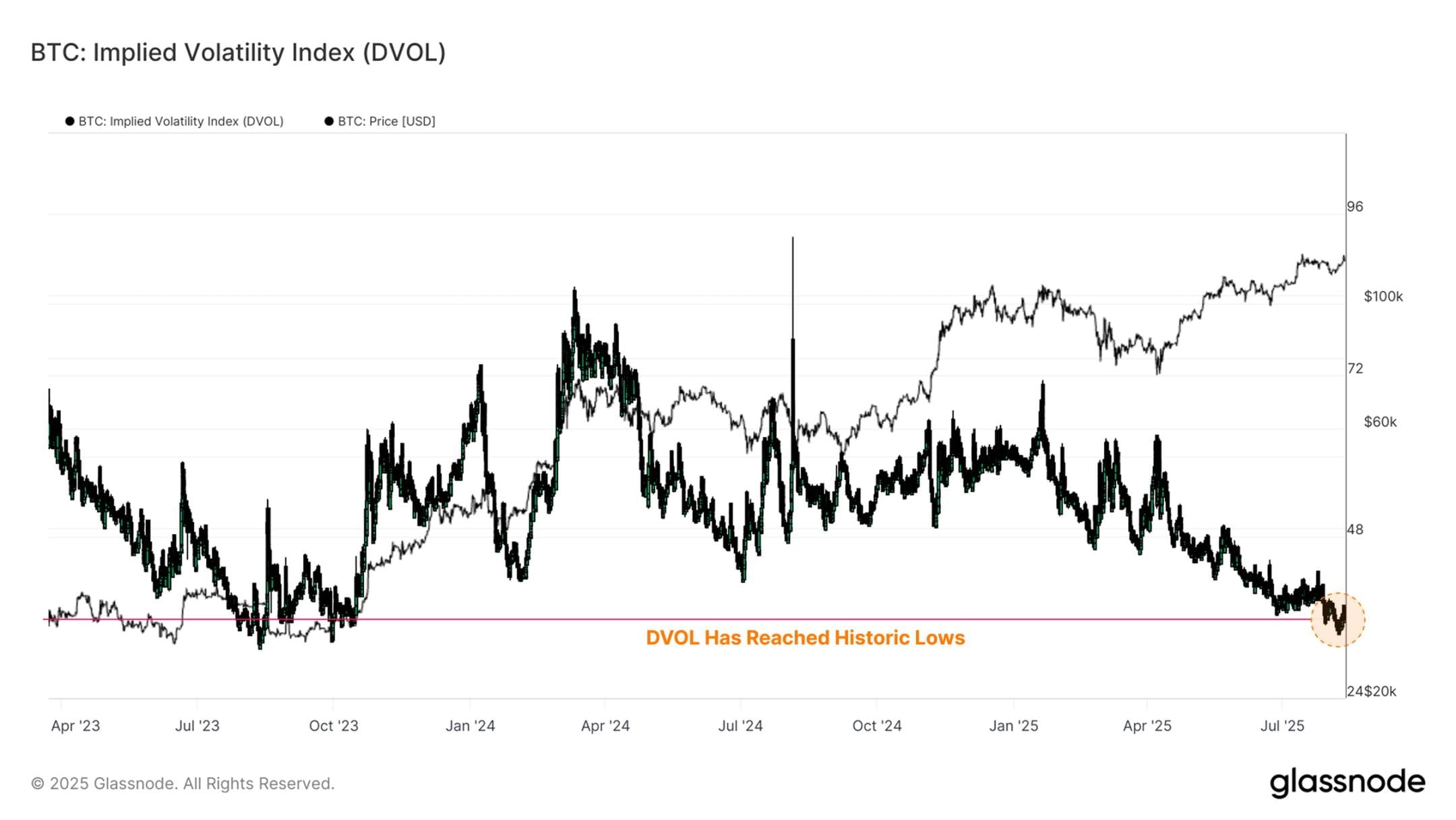
Additionally, we can track the 6-month / 1-month implied volatility ratio to assess how market volatility expectations evolve over time. Changes in this ratio can reveal whether traders believe risks are concentrated in the near term or further out, helping to identify shifts in sentiment as well as anticipated periods of market stress or euphoria.
Currently, the 6-month / 1-month implied volatility ratio is high, with only 3.2% of trading days having readings above the current level. This indicates that options traders believe long-term uncertainty is significantly higher than short-term, suggesting that volatility expectations for the next two quarters will rise sharply.
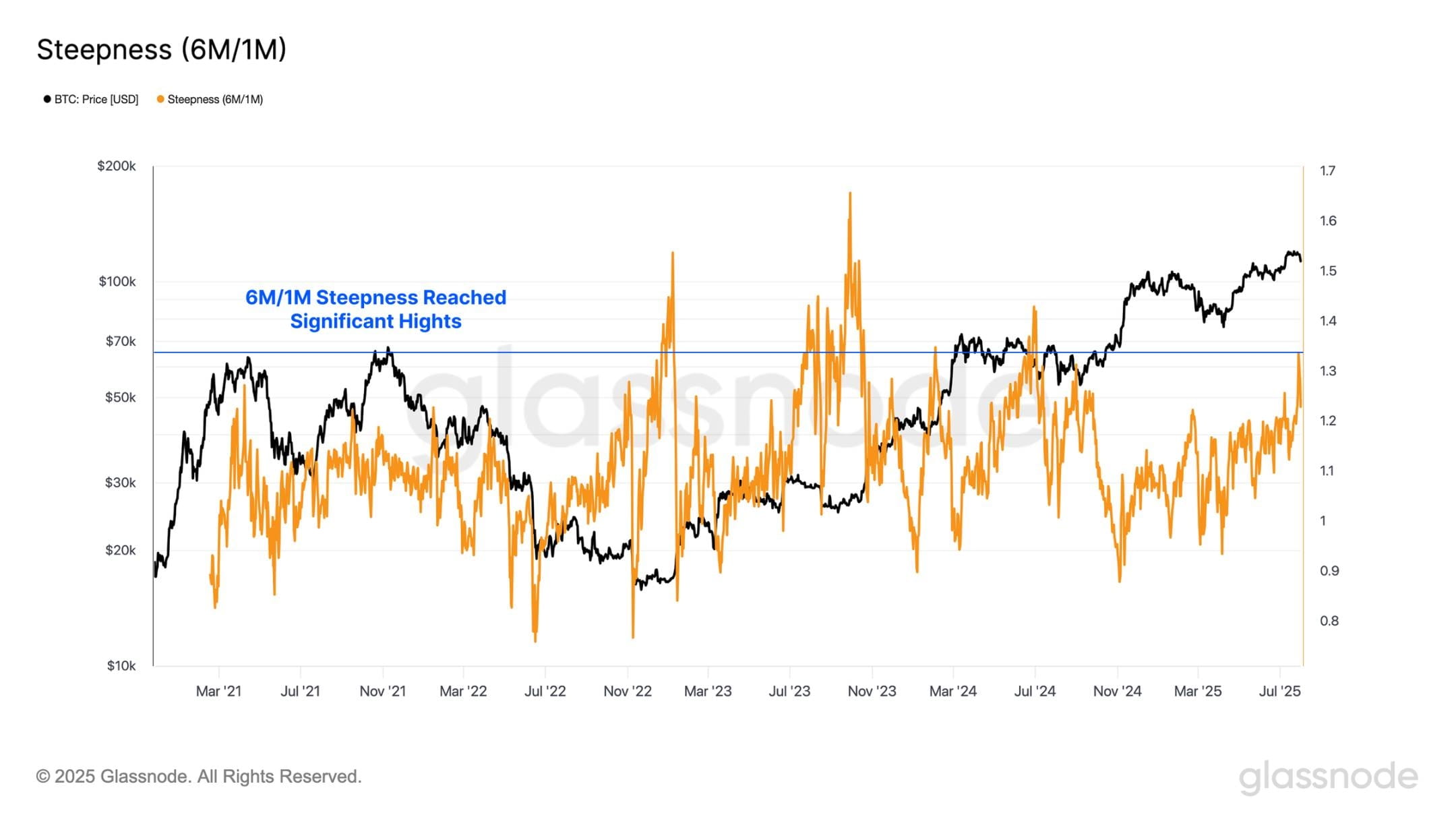
Market Navigation
To assess the potential upside targets of Ethereum's current rally, a useful reference point is its +1 standard deviation level of active realized price, which typically marks the beginning of selling pressure accumulation. Currently, this threshold is $4,700, which may represent an overheating area under current market conditions.
This level is historically significant, acting as a strong resistance during the rally in March 2024 and repeatedly becoming a resistance level during the 2020-2021 bull market cycle. In the past, when Ethereum broke through this range, it was usually accompanied by heightened investor sentiment and a fragile market structure.
Given these dynamics, the $4,700 price point is a key resistance level that requires close attention. A decisive breakout could signal the market entering a more speculative phase, but if sentiment reverses, it could also increase the risk of a sharp pullback.
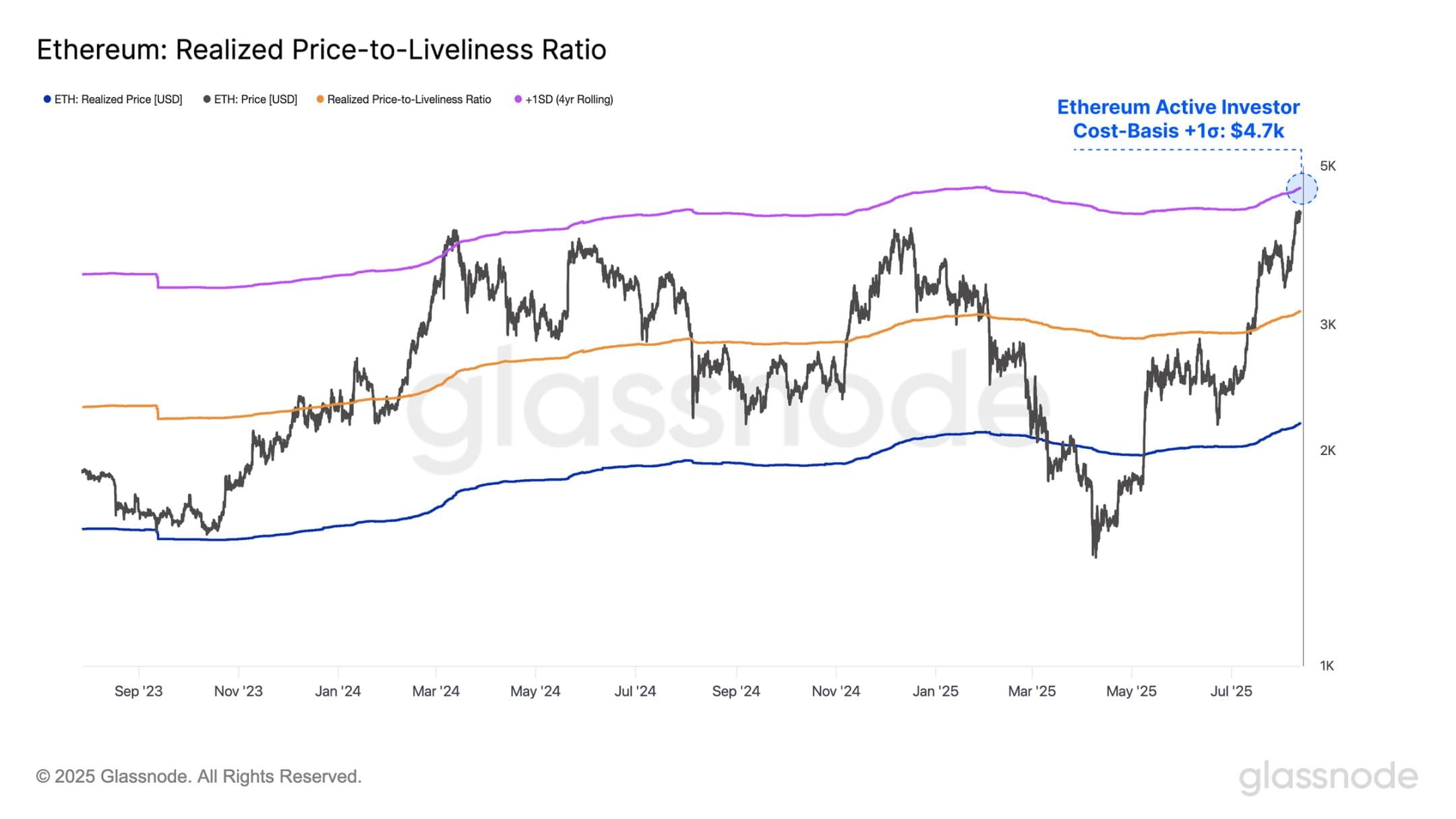
In contrast, for Bitcoin, we can assess the cost basis of short-term holders (STH), which represents the average purchase price of new market participants. Historically, this key price level has marked the dividing line between local bull and bear markets. By applying standard deviation ranges, we can assess whether the market is overheating or cooling down.
From the perspective of these pricing levels, $127,000 has become a key level to watch closely. If the price rises further, the market's reaction to this level will be crucial. Additionally, if Bitcoin decisively breaks through $127,000, it may target the $144,000 area, where the +2σ range coincides with a major resistance level, potentially triggering a sharp increase in selling pressure.
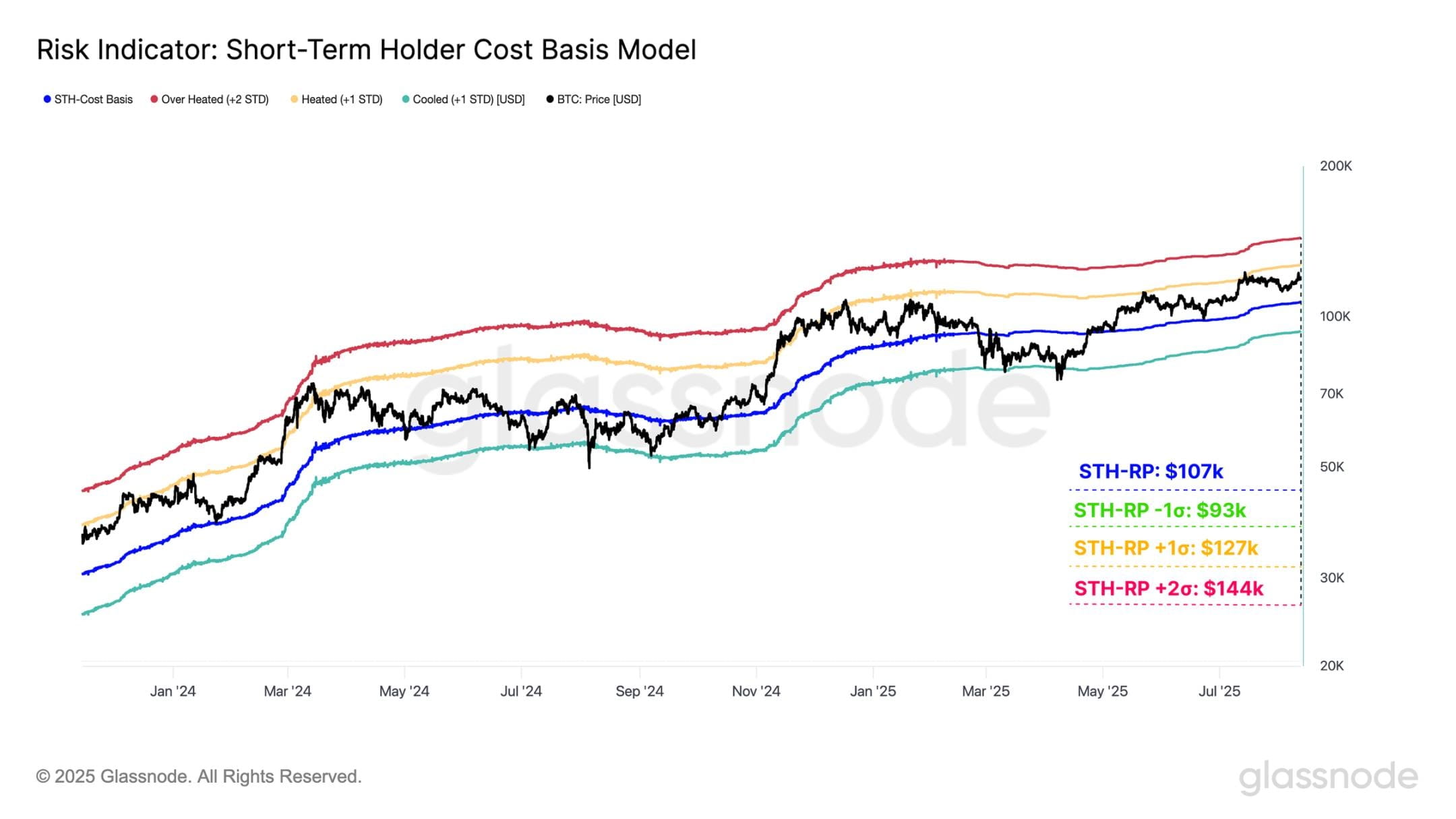
Summary and Conclusion
The market is currently in a sensitive phase characterized by high speculation and low volatility, necessitating caution regarding short-term reversal risks. The current digital asset market shows polarization: Ethereum is strongly rising, approaching historical highs, driving altcoins up as well, but the open contracts have surged to $47 billion, indicating leverage accumulation and rising market fragility; Bitcoin, on the other hand, is consolidating at high levels, on-chain indicators are robust, but the implied volatility in the options market has reached multi-year lows, signaling potential for severe volatility risks.
The strong performance of the digital asset market continues, with Ethereum soaring to $4,600, the highest level since December 2021, currently only 5% below its historical high, while Bitcoin's momentum remains strongly supported by robust on-chain fundamentals.
Strong price performance in altcoins has driven a surge in open contracts for major altcoins, reaching a record $47 billion, increasing the likelihood of significant price volatility. In contrast, the Bitcoin options market is still pricing in a low volatility environment, with implied volatility at multi-year lows, a setup that historically often signals a sudden broadening of actual volatility.
The two major cryptocurrencies are currently approaching historically significant resistance levels: Ethereum is at the +1σ level of the active realized price of $4,700, while Bitcoin is at the +1σ level of short-term holders' cost basis of $127,000. Price developments near these thresholds will be critical in determining whether the market moves further towards higher cyclical targets or faces a sharp pullback driven by leverage.
